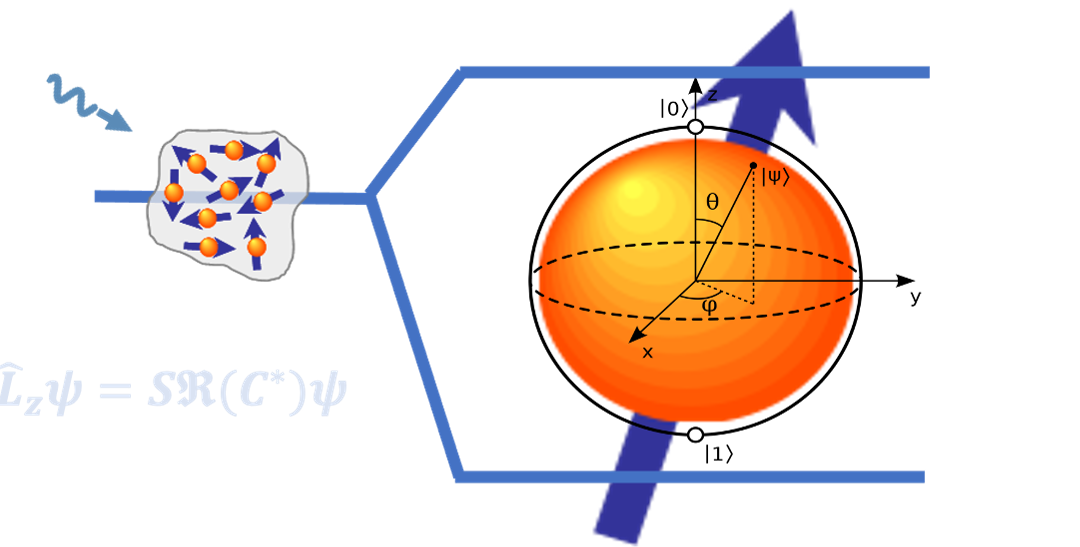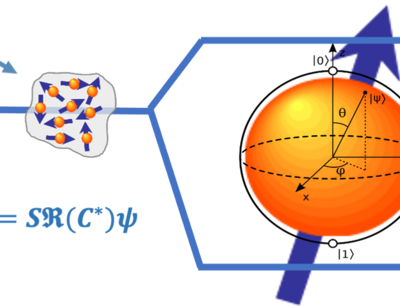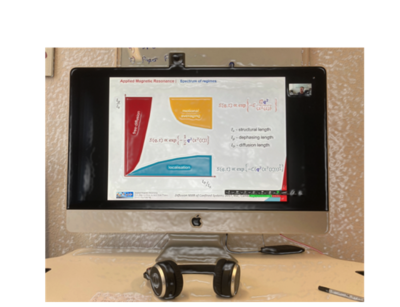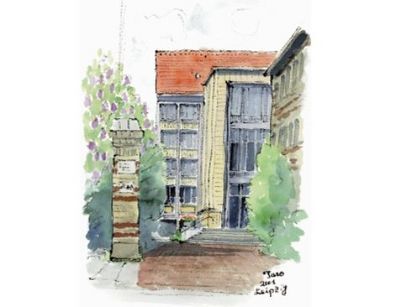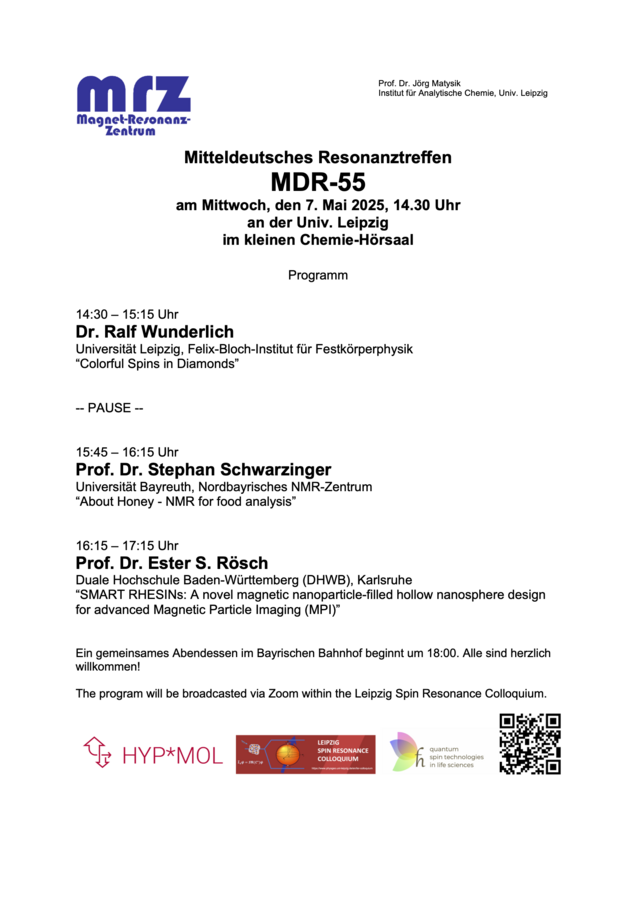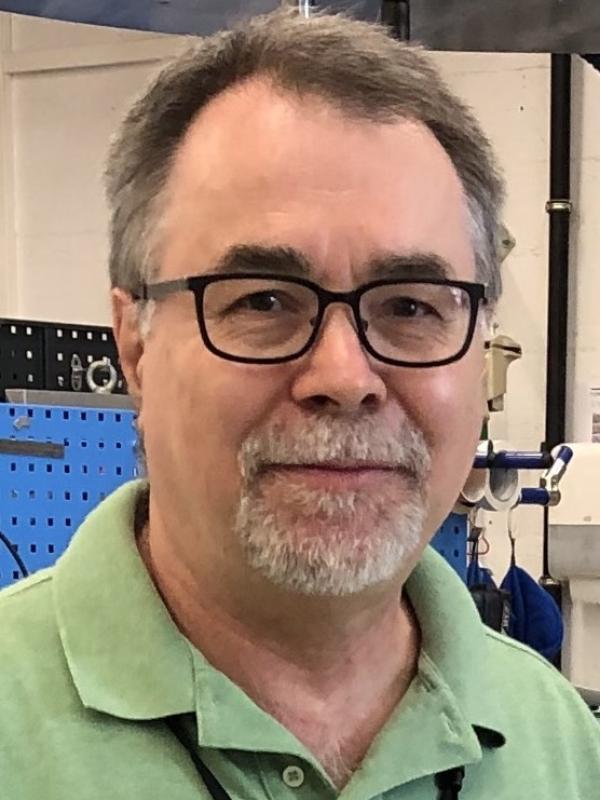Leipzig Spin Resonance Colloquium
LSR Colloquium
Current Program
Perfecting MRI imperfections
MRI provides excellent soft tissue contrast and has been the imaging modality of choice for in vivo neuroimaging. The surge in hardware, data acquisition, and image reconstruction development over the last decade has enabled the use of MRI to extract detailed structural and functional information of the brain in vivo at an unprecedented mesoscopic scale. At such a fine scale, various imaging imperfections arising from system hardware non-idealities, involuntary motions, and subtle physiological motions, such as from breathing, can end up being the main factors that limit actual achievable imaging resolution. This talk will describe various novel data acquisition and reconstruction techniques that we have developed to tackle these issues, to pave the way for rapid and robust in vivo MRI at the finest scales.
Profile
Quantum Computer based on NV centers
The NV centres in diamond are currently the only solid-state qubits that allow miniaturised construction and guarantee operation at room temperature. This is the only way to build processors for broad commercial use. While the methods for controlling and reading out these centres have been known and tested for years, the production of the centres has been a technological challenge. In order to achieve successful coupling of the NV centres, a very small spacing window has to be considered. When addressing the NVs, their defined alignment in the crystal is also necessary. Many NVs can only be read out electrically. Here, many material-scientific but also technical boundary conditions have to be taken into account. The talk shows new approaches to overcome this challenge. The solutions could also be of importance for other applications.
Profile
The Puzzle of Confined Water
Water in mixtures and confinements is of enormous importance in nature, ranging from biology to geology. In general, the properties of water in such environments may significantly deviate from those in the bulk liquid. A thorough understanding of these effects is also crucial for numerous technological applications and delivers valuable insights into the fundamentals of water’s state, including the origin of the manifold anomalies of this fascinating liquid. Against this backdrop, numerous scientists investigated the altered phase diagram or changed structures and dynamics of water under such circumstances in order to solve the puzzle of confined water.1 In particular, the degree and range of distorted water properties at various types of interfaces were determined, enabling, e.g., a tuning of water’s properties in applications. Furthermore, a dynamical crossover of deeply cooled confined water received massive attention because of a possible relation to a much debated liquid-liquid phase transition of bulk water, which may be the key to explaining water’s anomalies.
In this contribution, combined experimental and computational studies on confined water will be presented. In particular, a broad variety of NMR methods will be applied, ranging from diffusometry over spectroscopy to relaxometry, including field-cycling approaches. It will be shown that free energy landscapes enable a quantitative understanding of the strength and range of gradients in water dynamics near interfaces.2 Furthermore, it will be demonstrated that complementing the various NMR methods with calorimetric and dielectric studies yields in-depth insights into water and ice phases in confinement. In particular, this combined approach unravels the origin of the dynamical crossover of confined water and allows conclusions about its debated relation to the phase behavior of bulk water.3,4 Moreover, such studies reveal that ice and water phases, which coexist over a broad temperature range in confinement, rapidly exchange molecules, i.e., there is a highly dynamic ice-water equilibrium, which may contribute to the thrilling but elusive properties of amorphous bulk water phases at low temperatures.5
REFERENCES
1. S. Cerveny, F. Mallamace, J. Swenson, M. Vogel, and L. Xu, Chem. Rev. (2016), 116, 7608
2. S. Hefner, R. Horstmann, S. Kloth, and M. Vogel, Phys. Rev. Lett. (2024), 133, 106201
3. E. Steinrücken, M. Weigler, V. Schiller, and M. Vogel J. Phys. Chem. Lett. (2023), 14, 4104
4. J. H. Melillo, D. Cangialosi, V. Di Lisio, E. Steinrücken, M. Vogel, S. Cerveny, Proc. Natl. Acad. Sci. (2024), 121, e2407030121
5. V. Schiller and M. Vogel, Phys. Rev. Lett. (2024), 132, 016201
Profile
Nanoscale covariance magnetometry with diamond quantum sensors
Correlated phenomena play a central role in condensed matter physics, but in many cases there are no tools available that allow for measurements of correlations at the relevant length scales (nanometers - microns). We have recently demonstrated that nitrogen vacancy (NV) centers in diamond can be used as point sensors for measuring two-point magnetic field correlators [1]. NV centers are atom-scale defects that can be used to sense magnetic fields with high sensitivity and spatial resolution. Typically, the magnetic field is measured by averaging sequential measurements of single NV centers, or by spatial averaging over ensembles of many NV centers, which provides mean values that contain no nonlocal information about the relationship between two points separated in space or time. We recently proposed and implemented a sensing modality whereby two or more NV centers are measured simultaneously, from which we extract temporal and spatial correlations in their signals that would otherwise be inaccessible. We demonstrate measurements of correlated applied noise using spin-to-charge readout of two NV centers and implement a spectral reconstruction protocol for disentangling local and nonlocal noise sources. More recently, we have shown how to extend these measurements below the diffraction limit and using entangled pairs of NV centers, and we have also demonstrated massively multiplexed nanoscale sensing measurements with hundreds of NV centers in parallel []. This novel quantum sensing platform will allow us to measure new physical quantities that are otherwise inaccessible with current tools, particularly in condensed matter systems where two-point correlators can be used to characterize charge transport, magnetism, and non-equilibrium dynamics.
[1] "Nanoscale covariance magnetometry with diamond quantum sensors," J. Rovny, Z. Yuan, M. Fitzpatrick, A. I. Abdalla, L. Futamura, C. Fox, M. C. Cambria, S. Kolkowitz, N. P. de Leon, Science 378, 6626 1301-1305 (2022).
[2] "Massively multiplexed nanoscale magnetometry with diamond quantum sensors," K.H. Cheng, Z. Kazi, J. Rovny, B. Zhang, L. Nassar, J. D. Thompson, N. P. de Leon, arXiv:2408.11666.
Profile
Electron Spin-Lattice Relaxation of Nitrido-Chromium(V) Complexes and Oxo-Vanadium(IV) Porphyrins
Opportunities for using molecules as qubits are driving studies to understand properties that contribute to long electron spin lattice relaxation times. Nitrido-chromium(V) complexes provide the opportunity to compare relaxation times for isotopes with I = 0 and I = 3/2. Oxo-vanadium porphyrins are of particular interest as qubits because of their relatively long electron spin relaxation times. Spin-lattice relaxation was measured by inversion recovery EPR as a function of temperature and of position in the spectrum for two nitrido chromium(V) complexes and for vanadyl tetraphenylporphyrin (VOTPP) in titanyl tetraphenylporphyin (TiOTPP) and zinc tetraphenylporphyrin (ZnTPP) hosts. T1also was measured for the vanadyl complexes of octaethylporphyrin (OEP) and tetratolylporphyrin (TTP) in ZnOEP or ZnTTP, respectively. Doping levels were 0.05% to 0.5%. Within experimental uncertainty the relaxation times for the Cr(V) complexes are the same for I = 0 and I = 3/2, which confirms prior observations that for these systems modulation of nuclear hyperfine interaction makes negligible contribution to relaxation. Ab initio calculations show the importance of the relatively high energy electronic states. For these complexes the relaxation is dominated by phonons with energies less than about 100 cm-1
T1 anisotropy is defined as the ratio of T1 when the magnetic field is along the VO bond (the z axis) to T1 when the magnetic field is in the porphyrin plane. For these vanadyl porphyrins T1 anisotropy increases rapidly between about 60 and 140 K and is strongly dependent on the host lattice, ranging from the unusually large maxima of 36 for VOTPP in TiOTPP to 3.8 for VOTPP in ZnTPP and 3.3 for VOOEP in ZnOEP. Characterizing processes that enhance relaxation in the perpendicular plane are key to understanding relaxation. Empirical modeling of the temperature dependence of T1showed that phonons with energies of 190 to 225 cm-1 make substantially larger contributions to relaxation in the perpendicular plane than along the z axis and that the magnitudes of these contributions were strongly dependent on the host lattice. X-ray crystallography has shown that TiOTPP and VOTPP are isostructural, which means that there is a closer match of structures between the dopant and the host than for the Zn porphyrins, which may enhance energy transfer. These results demonstrate that optimizing molecules as qubits requires consideration of interaction with the host lattice in addition to molecular properties.
Profile
MD simulations of NMR relaxation and diffusion of fluids
NMR relaxation and diffusion provide unique and powerful insights into the molecular dynamics of complex fluids, with diverse industrial applications ranging from characterizing fluids in organic-rich source rocks to imaging the state of tissues in the human body. For the last ten years, we have been developing atomistic molecular dynamics (MD) simulations of NMR relaxation and diffusion, without any adjustable parameters in the interpretation of the simulations, without any empirical relaxation models, without constraining bonds, and without coarse graining the dynamics. Our approach, together with the increasing availability of high-performance computing, presents a compelling way to study the fundamental physics behind the NMR relaxation and diffusion of complex fluid systems.
In this colloquium, I will present some examples of our MD simulations including 1H-1H dipole-dipole relaxation and diffusion of water, alkanes, polymeric viscosity standards, hydrogen bonding fluids, alkanes under nanoconfinement in polymers and kerogen, 1H spin-rotation relaxation of methane, gadolinium-based contrast agents, and analytical solutions using molecular modes of NMR relaxation. I show how MD simulations are validated by NMR measurements, and cases where differences between MD simulations and NMR measurements reveal additional insights. I also show how the integration of NMR measurements, MD simulations, and thermodynamics with molecular density functional theory (mDFT) can be used to determine the competitive sorption and storage volumes of fluids under organic nanoconfinement.
Profile
K-Ras on the move
Despite the prominent role of K-Ras protein in many different types of human cancer, major gaps in atomic-level information by traditional structural biological methods (X-ray, NMR, MD) severely limit our understanding of K-Ras function in health and disease. This is primarily due to the challenges to work with K-Ras in the presence of active, hydrolyzable GTP and the difficulty to observe the functionally critical Switch I and Switch II regions. I will describe how these challenges can be addressed by NMR spectroscopy revealing new information about the K-Ras functional dynamics on timescales from nanoseconds to milliseconds using relaxation dispersion and nanoparticle-assisted spin relaxation (NASR). The experimental data reveal cooperative transitions of active K-Ras.GTP to a highly dynamic excited state that closely resembles the partially disordered inactive K-Ras.GDP state. The results help understand differential GTPase activities and signaling properties of the WT versus oncogenic mutants guiding new strategies for the development of therapeutics.
Profile
The Iseult 11.7T human MRI project - a 20 year old odyssey
The Iseult project started in 2001, with one fundamental idea in mind being to design and build a human brain “explorer” consisting of a whole-body magnet of 11.7T field strength with a 90-cm wide bore. After nearly 20 years of research and development at the French Atomic Energy Commission (CEA), prototyping, integration and tests, first images were acquired in vitro with this unique MRI scanner in 2021. The main superconducting coil of the Iseult magnet is made of NbTi and is immerged into a 7000-liter He vessel at a temperature of 1.8 K (below the 2.17 K transition from liquid to superfluid He). Following a double pancake design, it sustains a current of 1483 A and has an inductance of 308 H, allowing to ramp-up the field from 0 to 11.7T in approximately 5 hours. This magnet is actively shielded by two 5-m diameter superconducting coils also immerged in superfluid He. The whole magnet assembly weighs 132 tons with external diameter and length of 5 m. After the cool down of the magnet and the first ramp-up at 11.7T in 2019, the imaging equipment (of the Siemens MAGNETOM 11.7T MRI series) was integrated. Approval from the regulatory agency was obtained in 2023 to scan a first series of 20 volunteers, leading to exquisite anatomical in vivo images. This talk will present the 20-year Iseult odyssey covering the history, important technological milestones (safety, first in vivo results etc) and challenges inherent to such quest.
Program Archive
LSRC coordinator: Dr. Evgeniya Kirillina, contact email
